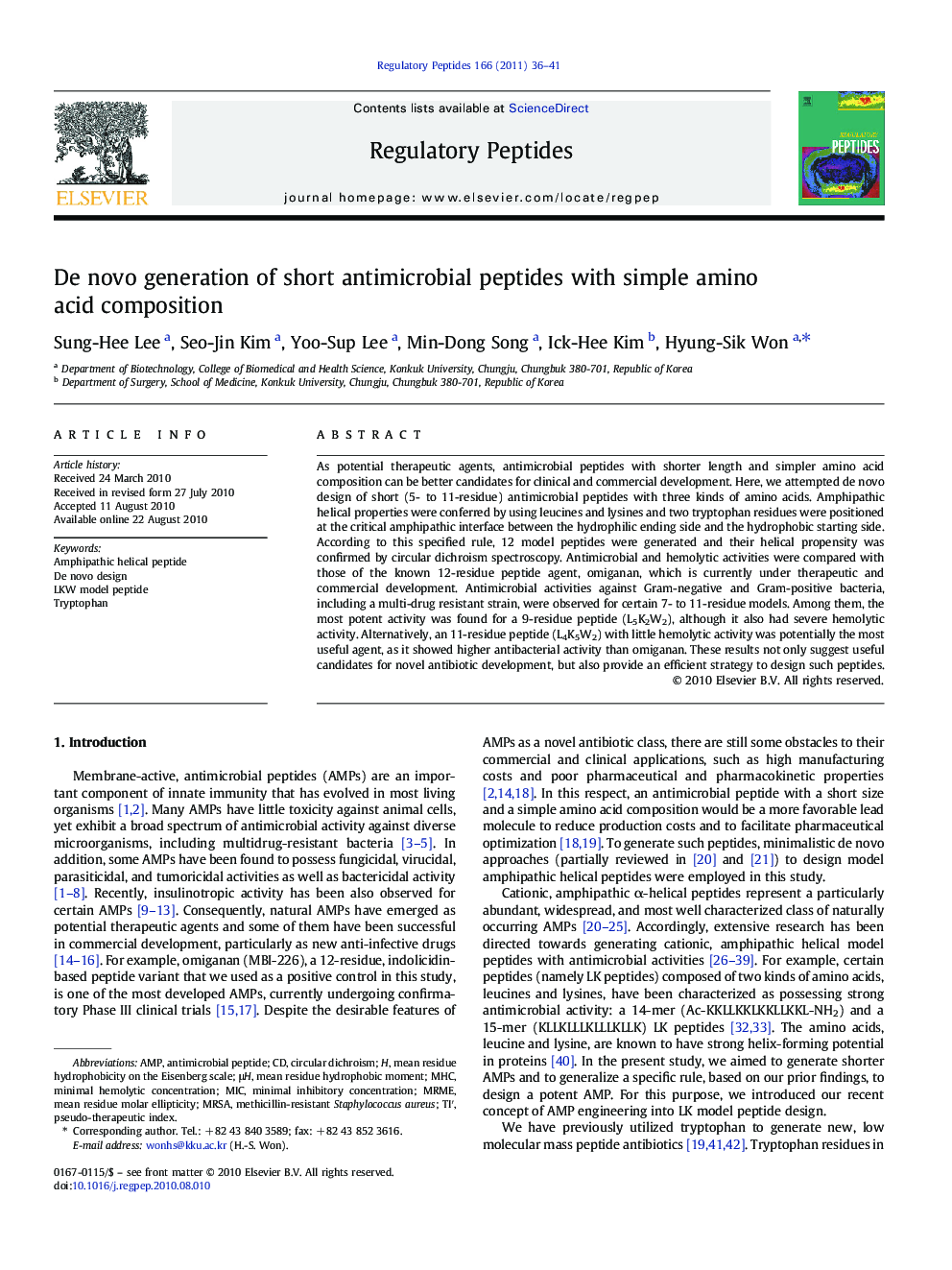| Article ID | Journal | Published Year | Pages | File Type |
|---|---|---|---|---|
| 2022611 | Regulatory Peptides | 2011 | 6 Pages |
As potential therapeutic agents, antimicrobial peptides with shorter length and simpler amino acid composition can be better candidates for clinical and commercial development. Here, we attempted de novo design of short (5- to 11-residue) antimicrobial peptides with three kinds of amino acids. Amphipathic helical properties were conferred by using leucines and lysines and two tryptophan residues were positioned at the critical amphipathic interface between the hydrophilic ending side and the hydrophobic starting side. According to this specified rule, 12 model peptides were generated and their helical propensity was confirmed by circular dichroism spectroscopy. Antimicrobial and hemolytic activities were compared with those of the known 12-residue peptide agent, omiganan, which is currently under therapeutic and commercial development. Antimicrobial activities against Gram-negative and Gram-positive bacteria, including a multi-drug resistant strain, were observed for certain 7- to 11-residue models. Among them, the most potent activity was found for a 9-residue peptide (L5K2W2), although it also had severe hemolytic activity. Alternatively, an 11-residue peptide (L4K5W2) with little hemolytic activity was potentially the most useful agent, as it showed higher antibacterial activity than omiganan. These results not only suggest useful candidates for novel antibiotic development, but also provide an efficient strategy to design such peptides.
Research Highlights►Novel antimicrobial peptides with a short length and a simple amino acid composition were generated by a rational design. ►Amphipathic helical properties were conferred by using leucines and lysines. ►Two tryptophan residues were positioned at the critical amphipathic interface. ►Potent antimicrobial activity with little hemolytic activity was observed. ►Structural determinants of activity and selectivity were identified.
